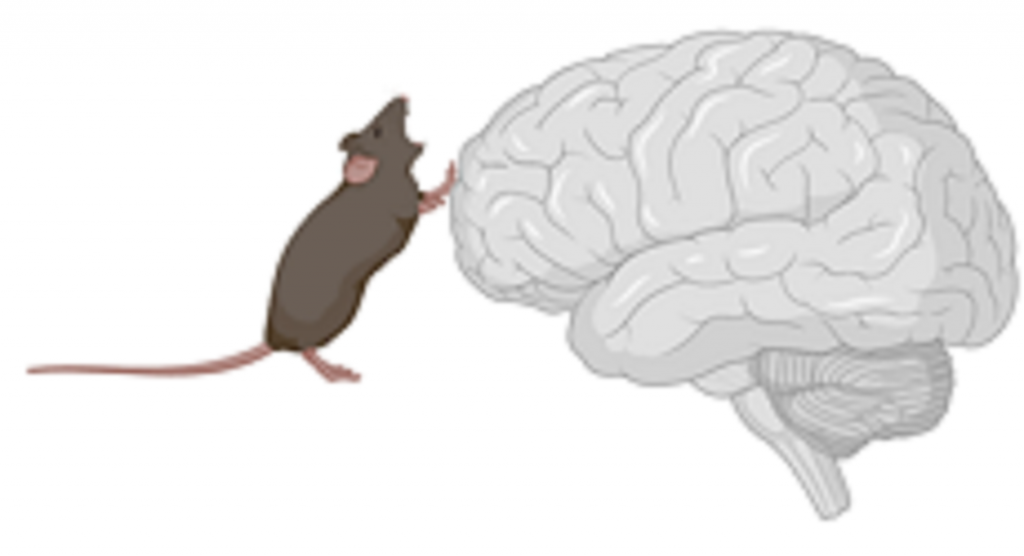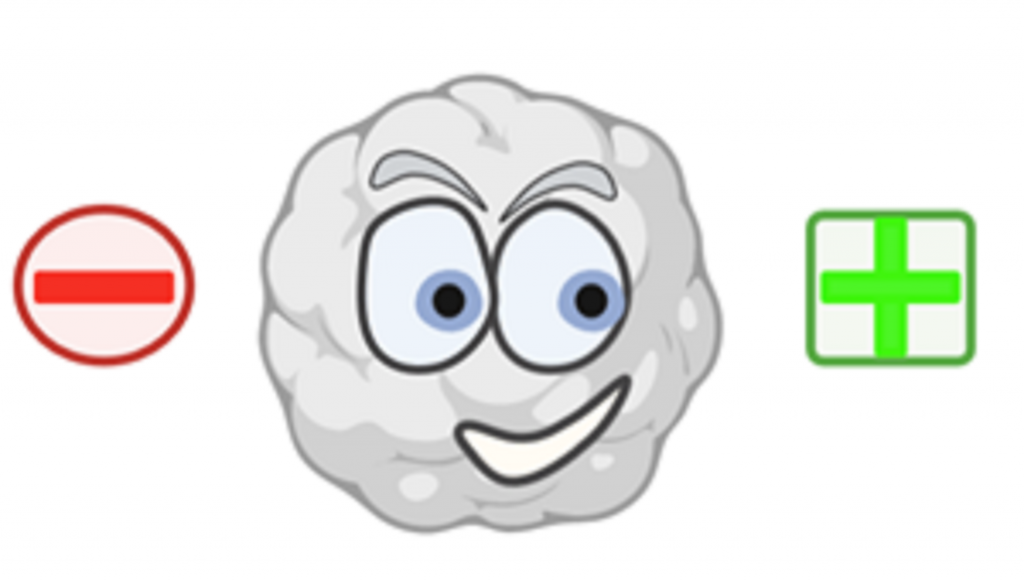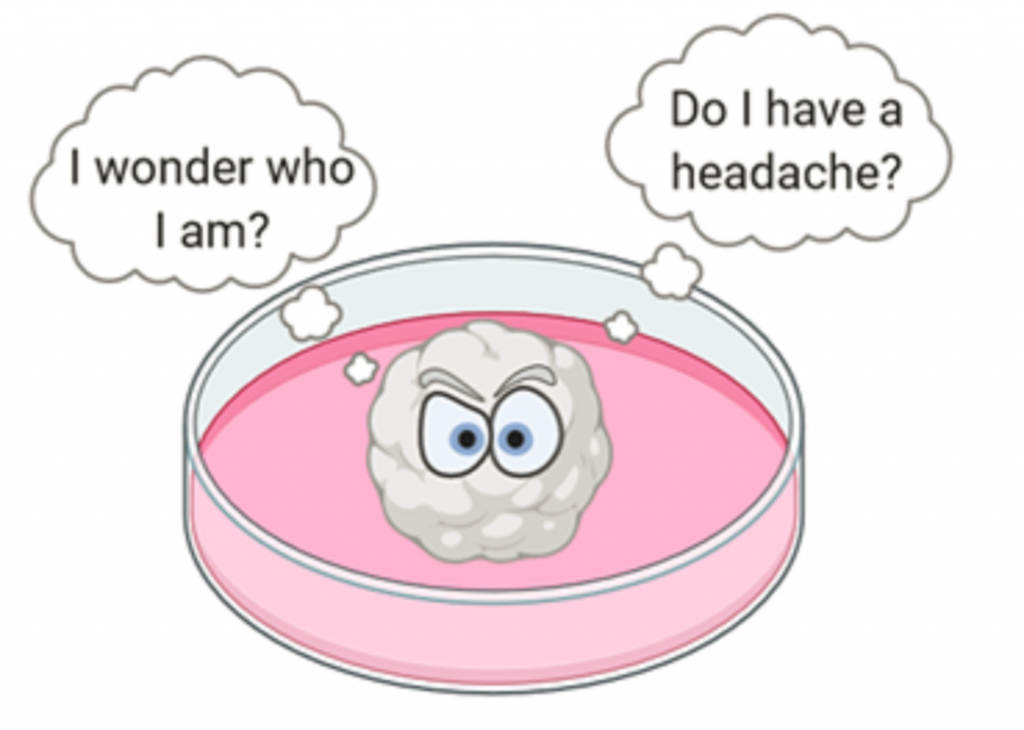Mouse vs. Human brain
To understand biological processes and mechanisms of complex organs such as the brain, it is essential to use a suitable model system that often is exemplified by model organisms. The choice of the right animal model is highly dependent on the scientific question. In the last decades, the mouse is probably the most commonly used animal model in science. This is mainly due to their relatively short reproduction time and the progressive simplification to manipulate the mouse genome that nowadays bears an enormous amount of various transgenic mouse models (Perlman 2016). Usage of these mouse models in research has led to a massively grown overall understanding of biological processes even in highly complex organs such as the brain. However, apart from the ethical point of view, trials to translate discoveries in animal models to humans often fail, mainly due to the natural differences between the two species. Already the overall structure of the mouse brain compared to the human brain represents an immense barrier to gain a better understanding of the human brain (Perlman 2016). Among the fact, that mice are living creatures that deserve protection, investigating human cells is a valuable argument to change the model. However, the 2D cell culture as an alternative to animal models comprises the big disadvantage of unnaturally grown cells on plastics that obviously cannot be the model of choice if it comes to organ-specific cell types. Recently and more frequently, one can observe published studies using organ-specific cell culture growing in 3D, which seems to represent a promising model to reduce and replace the number of animals and to incorporate the specific organ complexity of humans (Mansour et al. 2020).
Why human organoids?

The hereby described organ-specific cell cultures are 3D experimental models suitable to mimic organogenesis and can be applied to several organs. These so-called organoids have the advantage to be generated from pluripotent stem cells (PSCs) harboring the capacity to differentiate into any cell type in the body. In terms of the human brain, this model features cell type composition and organization of a fetal brain. Thereby, it is especially suitable to study human brain development, in particular the cell biology of neurons. To achieve functional brain organoids with the right architecture and physiology, specific factors and environmental conditions are required to differentiate PSCs into neurons. Ideally, the brain organoid development leads to a small version of the brain, comprising the anticipated cell types as self-organized tissue that additionally exhibits all specifications of the whole organ, such as the formation of the different cortical layers or even different brain region identities. The usage of these kinds of brain organoids is highly suitable to investigate early neurodevelopment and was successfully used to study neurodevelopmental disorders like microcephaly (Mansour et al. 2020; Lavazza und Pizzetti 2020).
Pros and Cons of brain organoids

However, the drawbacks of brain organoids just composed of neurons include underdevelopment and lack of essential cell types and structures of the brain observed in vivo. Besides the neuroectoderm originated cells like astrocytes and oligodendrocytes, other important units in the brain, such as the vasculature and the immune system, are also missing. To overcome the lack of vasculature it has been shown that the implantation of an early stage organoid into a mouse brain can lead to the development of functional neuronal networks and blood vessels. The growing organoid community is constantly improving this model system with various strategies to introduce the missing crucial cell types to acquire an in vitro model that is comparable to the in vivo situation. An exciting breakthrough was the detection of oscillatory network electrical activity, which is comparable to those measured in preterm newborns pointing to their relevance in human neurodevelopmental studies. In addition to the usage to study neurodevelopmental disorders, brain organoids are more frequently used for neurodegenerative diseases. However, the relevance to study diseases with the specification of an aged brain is questionable, and aging factors, i.e. overexpression of specific genes, may need to be introduced to induce maturation of brain organoids (Lavazza und Pizzetti 2020; Mansour et al. 2020).
Future perspectives with organoids

Nevertheless, many groups worldwide now study so-called “mini brains”, containing main brain regions, and the successful induction of neuronal activity, which is a hallmark of key brain functions, including memory. The similarity to the typical activity of human neurons was evidenced by detecting spontaneous firing neurons in cerebral brain organoids that indicate the ability to form new connections. Based on the fast progress in generating highly complex brain organoids and their similarities to human brain functions, neuroscientists get confronted with ethical questions. Is the generation of a brain with certain functions of a human brain ethically justifiable? To which extent is a “mini brain” able to develop a rudimental consciousness? Nowadays, the mechanisms involved in the consciousness of the human brain are still mysterious and largely unknown. With the rapid advancements in the field, it is very probable that brain organoid in the dish, at some point in the future, would be able to process stimuli to sense pleasure and pain as well as develop certain amount of consciousness. However, the currently studied “mini brains” feature several limitations pointing out that the functionality of a brain organoid will probably never exceed the limits of an in vitro model system. Beyond the small size compared to an adult human brain, brain organoids are less complex, they lack to some extent spatial organization, showing properties of unmatured neurons, and are in general missing an input and output exchange with the external environment. Conclusively, brain organoids serve as a valuable model system to investigate biological processes and human neurodevelopmental and neurodegenerative diseases and are well suitable to replace animal models to some degree (Lavazza und Pizzetti 2020; Wray 2020)
Author: Nelli Blank
References
Lavazza, Andrea; Pizzetti, Federico Gustavo (2020): Human cerebral organoids as a new legal and ethical challenge†. In: Journal of Law and the Biosciences. DOI: 10.1093/jlb/lsaa005.
Mansour, Abed AlFatah; Schafer, Simon T.; Gage, Fred H. (2020): Cellular complexity in brain organoids: Current progress and unsolved issues. In: Seminars in Cell & Developmental Biology. DOI: 10.1016/j.semcdb.2020.05.013.
Perlman, Robert L. (2016): Mouse models of human disease: An evolutionary perspective. In: Evolution, medicine, and public health 2016 (1), S. 170–176. DOI: 10.1093/emph/eow014.
Wray, Selina (2020): Modelling neurodegenerative disease using brain organoids. In: Seminars in Cell & Developmental Biology. DOI: 10.1016/j.semcdb.2020.05.012.
All Illustrations are created with BioRender.com
